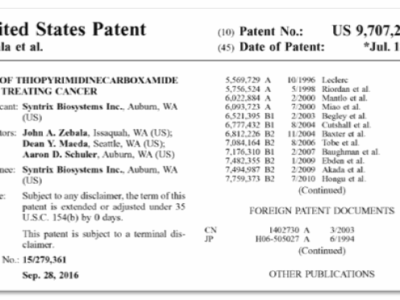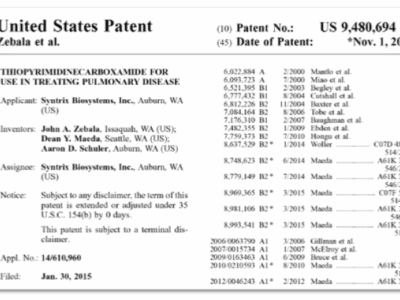
Congratulations to Syntrix scientists on their latest publication, which appeared in the ACS Journal of Medicinal Chemistry. Abstract: The G protein-coupled chemokine receptors CXCR1 and CXCR2 play key roles in inflammatory diseases and carcinogenesis. In inflammation, they activate and recruit polymorphonuclear cells (PMNs) through binding of the chemokines CXCL1 (CXCR1) and CXCL8 (CXCR1 and CXCR2). Structure-activity studies that examined the effect of a novel series of S-substituted 6-mercapto-N-phenyl-nicotinamides on CXCL1-stimulated Ca2+ flux in whole human PMNs led to the discovery of 2-[5-(4-Fluoro-phenylcarbamoyl)-pyridin-2-ylsulfanylmethyl]-phenylboronic acid (SX-517), a potent non-competitive boronic acid CXCR1/2 antagonist. SX-517 inhibited CXCL1-induced Ca2+ flux (IC50 = 38 nM) in human PMNs, but had no effect on Ca2+ flux induced by C5a, fMLF or PAF. In recombinant HEK293 cells that stably expressed CXCR2, SX-517 antagonized CXCL8-induced [35S]GTPγS binding (IC50 = 60 nM) and ERK1/2 phosphorylation. Inhibition was non-competitive, with SX-517 unable to compete the binding of [125I]-CXCL8 to CXCR2 membranes. SX-517 (0.2 mg/kg iv) significantly inhibited inflammation in an in vivo murine model. SX-517 is the first reported boronic acid chemokine antagonist, and represents a novel pharmacophore for CXCR1/2 antagonism.



